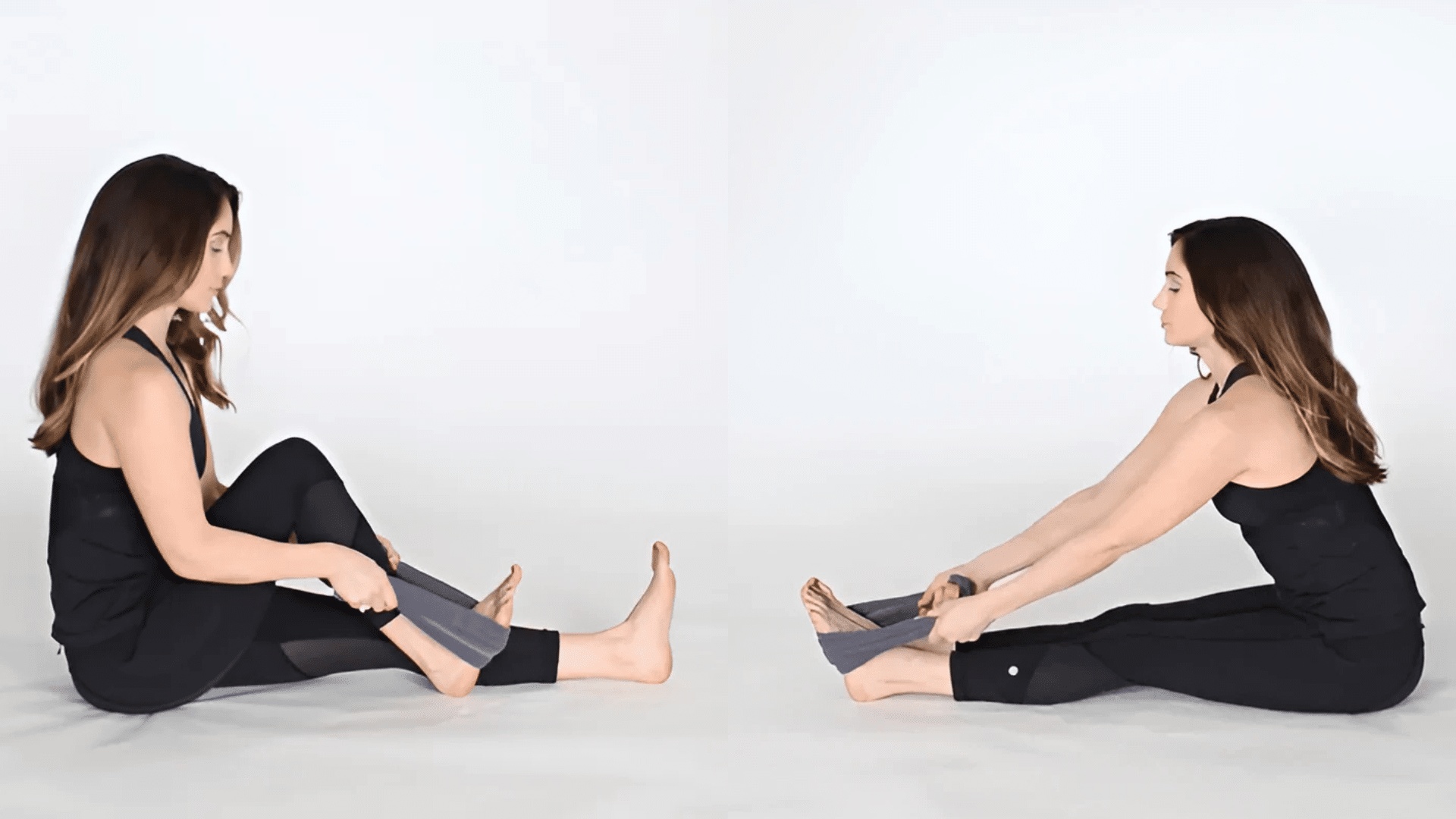I get how tough it is when ankle pain turns even short walks into a struggle. If the soreness sits on the outside of your ankle, it might be peroneal tendonitis.
The upside is that the right kind of movement can make a big difference. That’s why I’ve put together this guide with exercises to help ease peroneal tendonitis.
I’ll walk you through stretches, strengthening drills, and balance routines that I’ve seen work for recovery. You’ll also find safety tips, a clear progression plan, and advice for preventing flare-ups.
By the end, you’ll have a plan you can use with confidence.
What is Peroneal Tendonitis?
Peroneal tendonitis happens when the tendons that run along the outer side of your ankle become irritated or inflamed.
These tendons connect your calf muscles to the bones in your foot and help stabilize your ankle during movement.
Common causes include repeated stress from running, overuse in sports, or past ankle sprains that weaken the joint.
Symptoms often include pain or tenderness on the outer ankle, swelling, and a feeling of weakness when walking or balancing.
The good news is that targeted exercises can ease discomfort, restore strength, and improve stability over time.
How Peroneal Tendonitis Exercises Support Recovery
Peroneal tendonitis exercises are designed to ease pain while improving ankle stability.
- Stretching relieves tightness in the muscles and tendons, which helps reduce pressure on the outer ankle.
- Strengthening exercises build support around the foot and ankle, protecting the tendons from repeated stress and future irritation.
- Balance drills train your ankle to react better during movement, lowering the risk of re-injury.
Consistency is key; performing these exercises regularly allows steady progress.
Gradual progression, from gentle stretches to more advanced strengthening, ensures safe recovery without overloading the tendons, helping you return to normal activities with greater stability.
Safe Stretching Exercises for Peroneal Tendonitis
Stretching the right way keeps your body flexible and lowers the risk of injury. Here are some simple and safe stretches you can add to your routine:
1. Towel Stretch
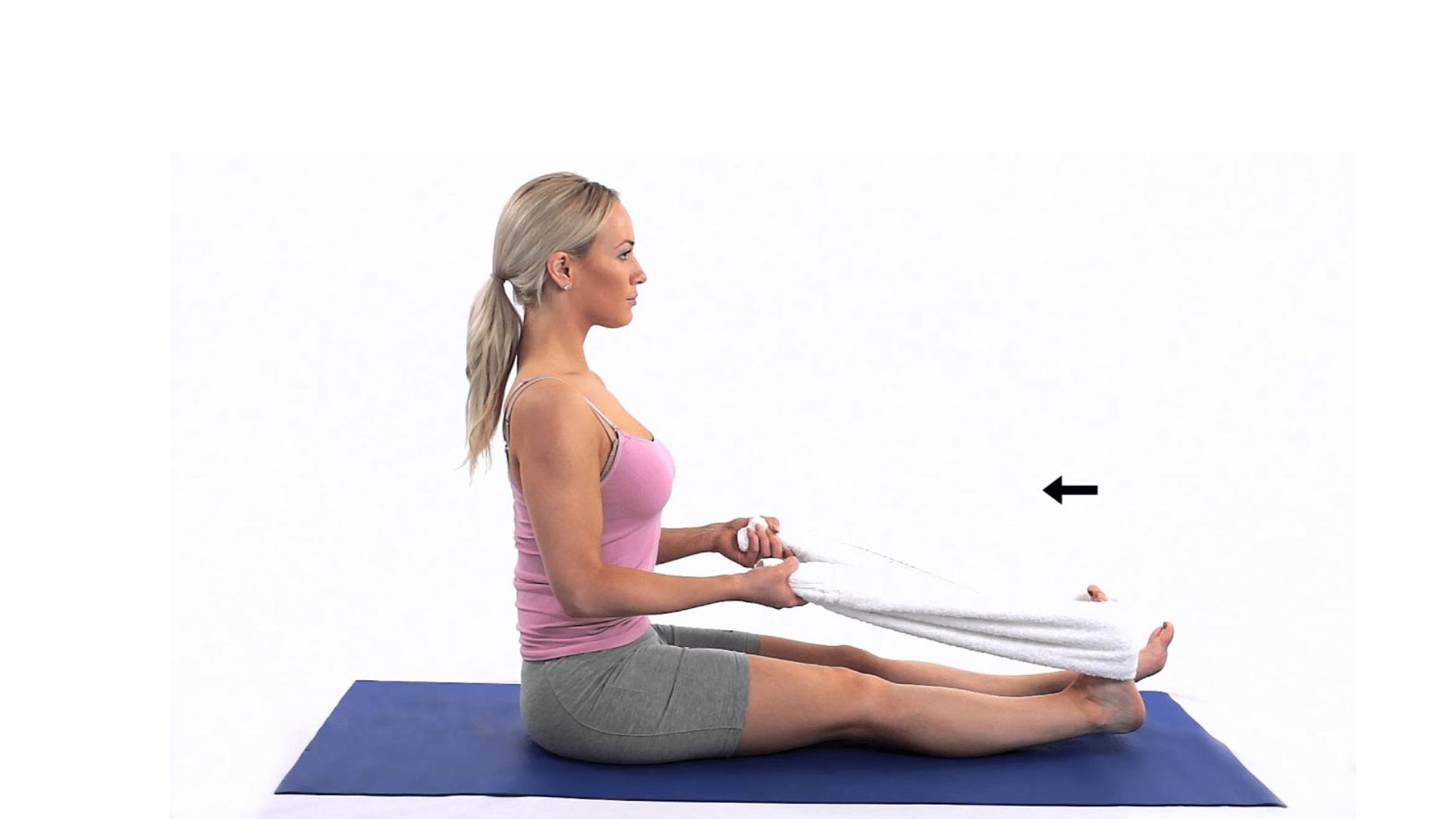
This stretch loosens tight calf and foot muscles. Sit with your leg straight, loop a towel around your foot, and pull gently until you feel a stretch.
Hold for 30 seconds, repeat three times. Keep your knee straight, and don’t tug too hard. Do this daily to reduce ankle tightness and improve flexibility during recovery.
2. Standing Calf Stretch
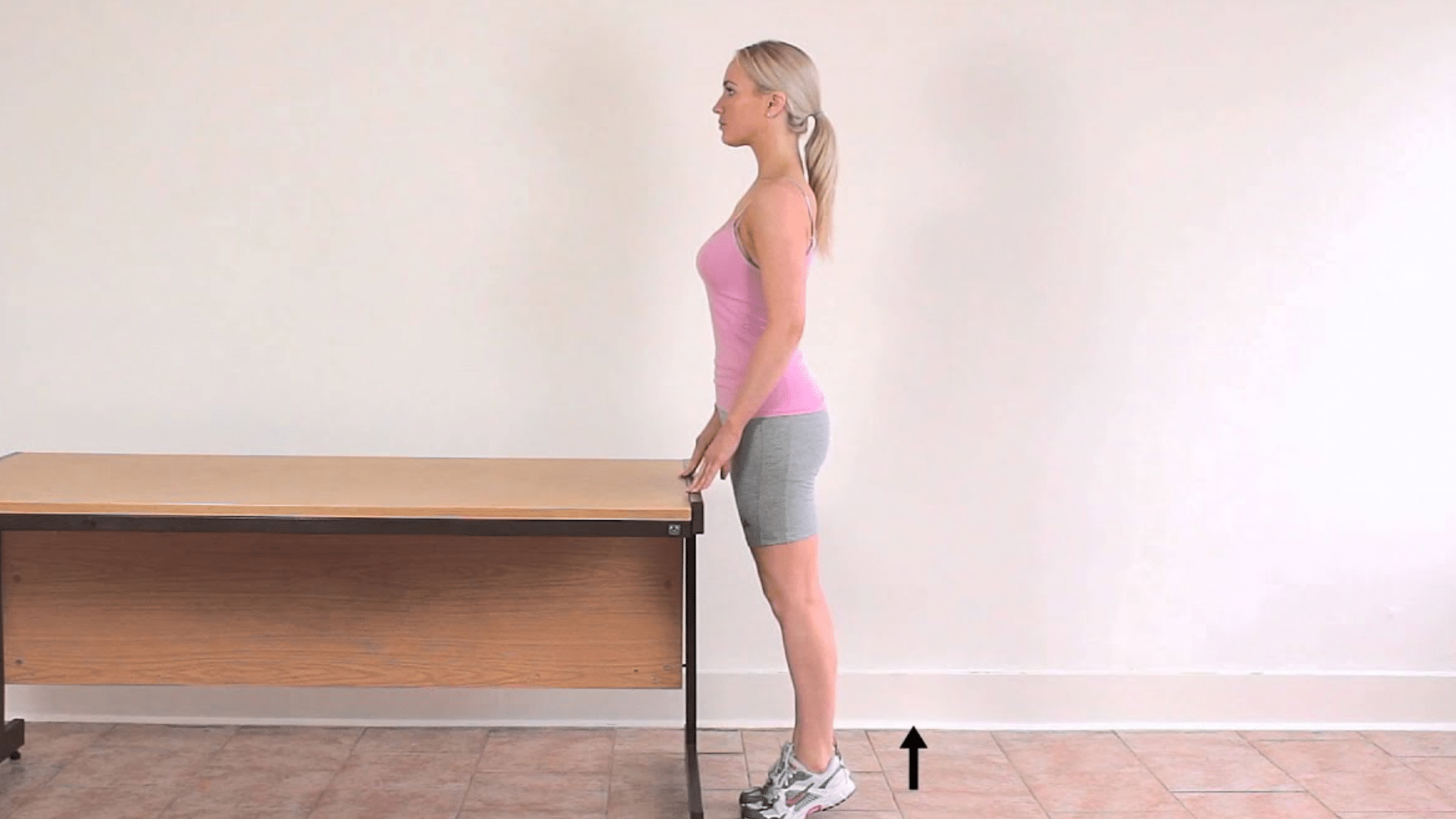
Face a wall, place your hands on it, and step one leg back with the heel flat. Lean forward slowly until your calf stretches. Hold 30 seconds, repeat three times.
Keep your back leg straight, front knee bent, and heel pressed down. This simple stretch reduces tension in the calf and supports ankle stability.
3. Soleus Stretch

Stand facing a wall, step back with the injured foot, and keep your heel down. Bend your front knee slightly to stretch deeper into the lower calf.
Hold 30 seconds, repeat three times. Keep your hips forward and back straight. This stretch targets the soleus muscle, easing stress on the tendons near the ankle.
4. Plantar Fascia Stretch
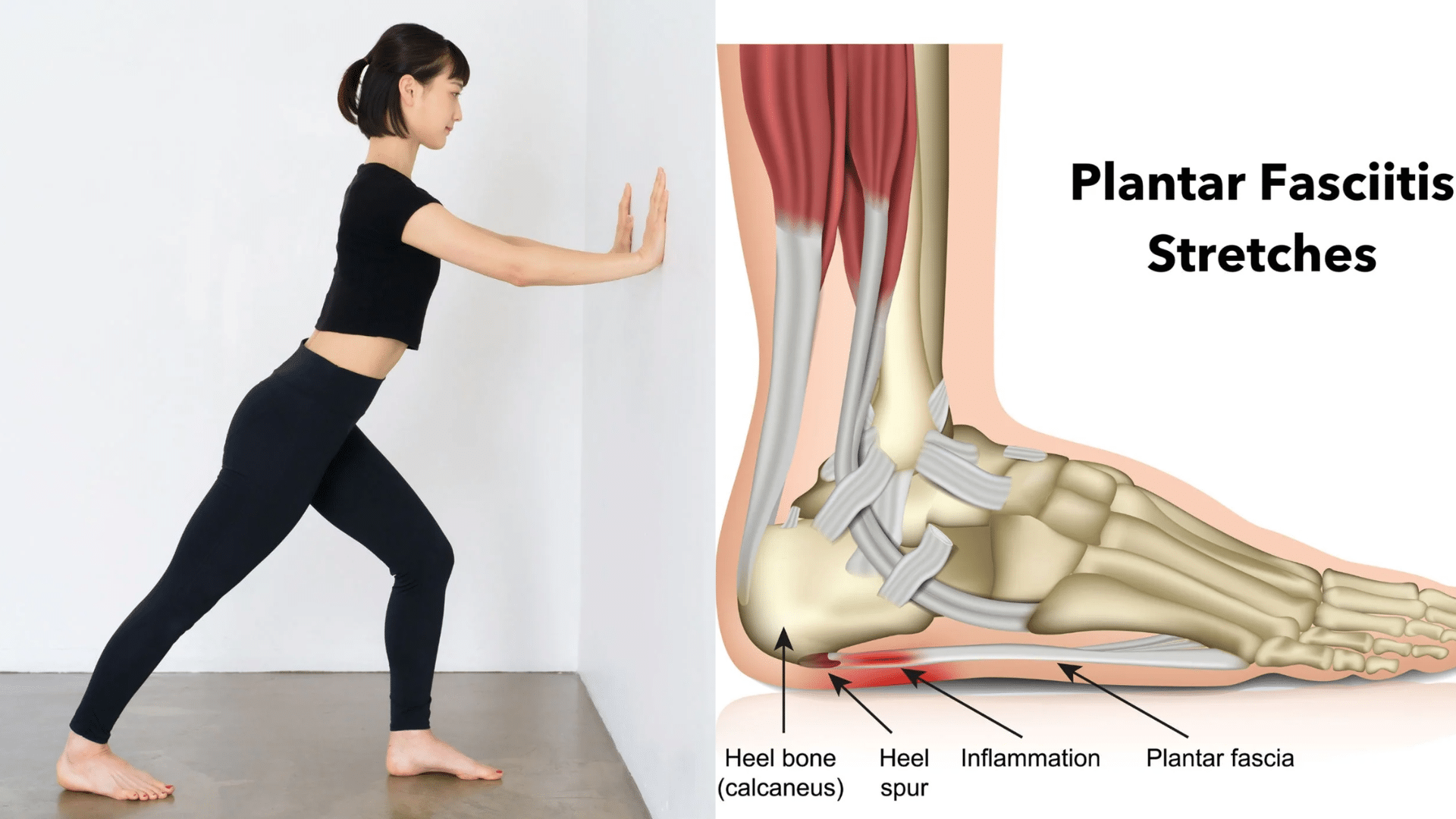
Sit in a chair and place your ankle over the opposite knee. Pull back on your toes until you feel a stretch under your foot.
Hold 30 seconds, repeat three times. Keep the stretch gentle, not painful. This move reduces strain in the plantar fascia and supports better foot mechanics during tendon recovery.
Strengthening Exercises for Tendon Support
Strong tendons protect your joints and help you move with less strain. These exercises focus on building support so your body stays stable and resilient:
1. Resistance Band Eversion
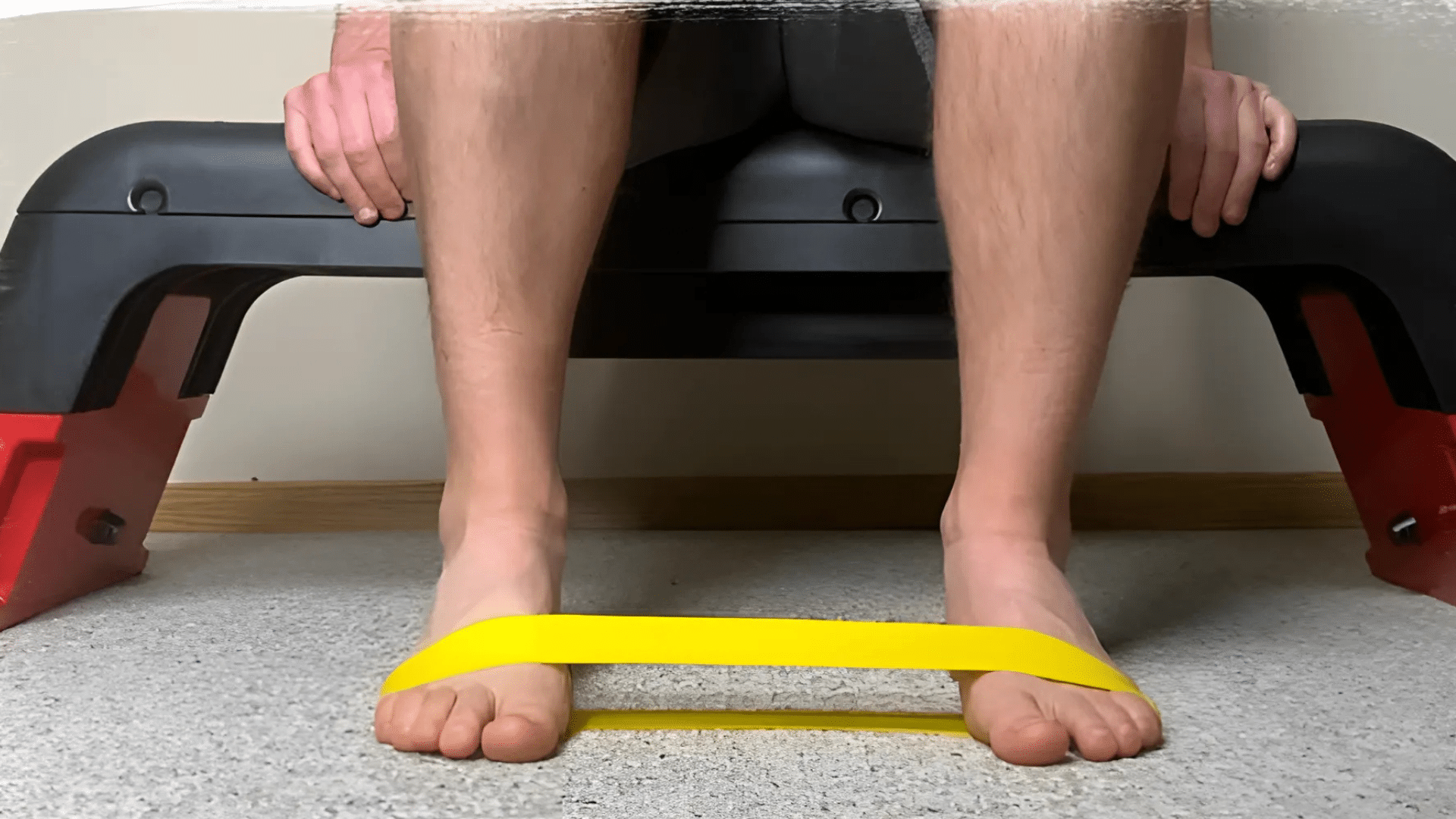
Sit with your leg extended, loop a resistance band around your foot, and secure the other end. Slowly turn your foot outward against resistance, then return with control.
Perform three sets of 10–12 reps. Avoid snapping the band back. This exercise strengthens the peroneal muscles, helping stabilize your ankle and protect the tendons during daily movement.
2. Heel Raises / Toe Raises
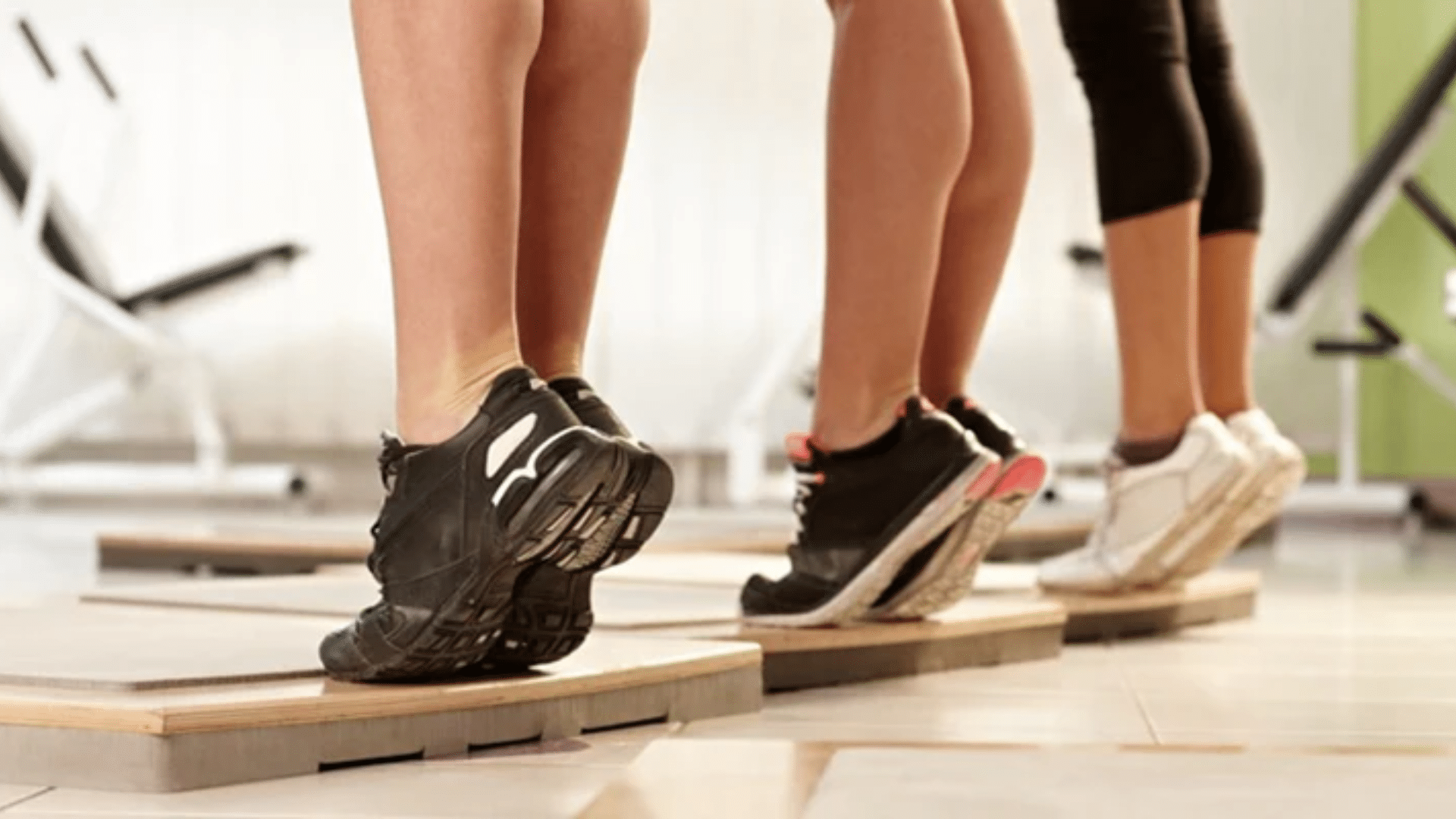
Stand with feet hip-width apart, slowly rise onto your toes, hold briefly, then lower. Repeat 10–15 times for three sets.
Reverse for toe raises, lifting your toes while heels stay down. These moves build strength in the calves and front shin muscles, reducing tendon load and supporting balance during walking, running, or side movements.
3. Tibialis Raises

Stand with your back against a wall, feet a few inches forward. Lift your toes toward your shins, keeping heels down, then lower. Repeat 12–15 reps, three sets.
Focus on controlled motion. This strengthens the tibialis anterior, improving ankle alignment and reducing overstrain on peroneal tendons during activity, especially when running or navigating uneven surfaces.
4. Squats with Balance Focus

Stand with feet shoulder-width apart. Lower into a squat while keeping heels grounded and knees aligned. Hold briefly, then return. Do three sets of 10–12 reps.
Add a stability challenge by holding onto a resistance band or balancing on one leg. This exercise strengthens legs and core, helping protect the ankle from tendon stress.
5. Lateral Band Walks

Place a resistance band around your ankles or just above your knees. Bend slightly at the knees, step sideways slowly, then bring your feet together. Repeat 10–15 steps in each direction for three sets.
Maintain tension in the band. This move strengthens hip and ankle stabilizers, reducing pressure on peroneal tendons and improving balance during athletic movements.
Balance and Stability Training
Improving balance and ankle control is crucial for the recovery of the peroneal tendons. Single-leg balance is a good starting point: begin by standing on one leg on the floor.
As you progress, close your eyes or add gentle taps with your free foot to increase difficulty. Wobble board or cushion training further challenges ankle stability, forcing small muscles to activate for control.
Step-ups and reach drills combine strength with coordination, teaching your ankle to handle everyday movement patterns.
Perform these exercises consistently, starting with short holds or low steps, then gradually increase time or repetitions to safely build long-term ankle stability.
Beginner → Intermediate → Advanced (Progression Plan)
Building strength and skill takes time, and moving step by step keeps it safe and effective. This plan shows how to grow your training from beginner to advanced levels:
| Phase | Duration | Focus Areas | Key Exercises | Progression Guidance |
|---|---|---|---|---|
| Beginner | First 2 weeks | Pain relief, mobility, gentle activation | Towel stretch, calf stretch, band eversion, and single-leg balance on the floor | Progress once pain decreases and you can complete exercises without discomfort. |
| Intermediate | Weeks 3–5 | Strength building, stability training | Heel raises, squats with focus, wobble board drills, soleus stretch | Move forward when balance improves and the ankle feels stronger during daily activities. |
| Advanced | Week 6 onward | Sport-specific control, dynamic ankle stability | Hopping drills, resisted walks, advanced balance taps, step-ups with reach | Start only when exercises are pain-free and the ankle tolerates higher-impact activity. |
Moving through these stages at your own pace makes a big difference. Stay patient, focus on good form, and only move forward when you feel ready. This way, your progress will be steady, safe, and long-lasting.
Exercises to Avoid with Peroneal Tendonitis
Certain activities can worsen tendon irritation, so avoid high-impact moves or painful stretches until your ankle has healed. Here are some exercises that one should avoid:
- Running and jumping: These high-impact activities place extra stress on the peroneal tendons and may slow recovery in the early stages.
- Side-to-side sports: Tennis, basketball, and similar movements can overload the ankle, increasing pain and the chance of further injury.
- Overstretching: Forcing the tendon beyond its limit may cause microtears and delay healing instead of improving flexibility.
- Pushing through sharp pain: Pain is a warning sign; ignoring it can make tendon damage worse and lengthen recovery time.
Precautions for Safe Recovery from Peroneal Tendonitis
Simple precautions help you avoid setbacks, protect your tendons, and ensure your exercises remain safe and effective during healing.
If you feel sharp pain, notice swelling, or your ankle becomes unstable, stop immediately. Discomfort that eases as you move is normal, but pain that worsens signals strain.
Continuing through pain can lead to further tendon damage. Always listen to your body and rest when needed to protect your ankle during recovery.
When to See a Doctor
Seek medical advice if pain persists longer than four to six weeks despite consistent exercise, or if swelling and weakness continue.
A healthcare professional can check for tendon tears, ankle instability, or other underlying problems.
Getting help early ensures you follow the right treatment plan and prevents minor issues from becoming long-term complications.
Why Warm-Ups and Cooldowns are Key
Warming up prepares your muscles and tendons for movement, while cooling down helps reduce stiffness afterward.
Start with light ankle circles or gentle walking before exercises. End with calf or towel stretches to release tension.
Skipping these steps increases the chance of strain or soreness. Making warm-up and cooldown part of your routine keeps recovery safer and more effective.
Safe Equipment Use
Resistance bands, wobble boards, and ankle braces can support recovery when used correctly. Keep movements slow and controlled when working with bands, and use a chair for balance on wobble boards.
Ankle braces may add support during activity, but should not replace strengthening. Always use equipment in moderation, ensuring safety without over-reliance. Proper use helps build confidence during exercises.
At-Home Daily Rehab Routine for Peroneal Tendonitis
A simple daily routine makes recovery easier and helps maintain steady progress.
Begin with a 10-minute beginner session that includes towel stretches, resistance band eversion, and single-leg balance exercises.
Perform this routine once daily for the first two weeks. As strength improves, increase to two sessions per day and add heel raises or squats three times per week. By weeks three to five, include wobble board drills or step-ups.
Always progress slowly, adding new exercises only when current ones feel comfortable and pain-free.
This approach prevents overloading the tendons while steadily improving ankle flexibility, strength, and balance.
Long-Term Prevention and Care
Taking care of your body isn’t just about fixing problems when they show up. Small, steady habits can keep your joints, muscles, and tendons healthy for years. Here are some simple ways to focus on prevention:
- Footwear for ankle support: Opt for shoes with good cushioning and lateral stability to minimize stress on the peroneal tendons during daily activities.
- Warm-up habits: Perform light ankle circles, calf stretches, and short walks before exercise to prepare your tendons and reduce the risk of injury.
- Ongoing strengthening drills: Continue performing heel raises, band eversion, and balance work weekly to maintain strong ankle muscles and supported tendons in the long term.
- Tips for athletes and runners: Gradually increase mileage, avoid uneven surfaces whenever possible, and incorporate cross-training to prevent overuse injuries to the ankle tendons.
By incorporating these into your lifestyle, you’ll lower the risk of injuries and feel stronger over time. Prevention today means easier movement and better health in the long run.
Conclusion
If you’ve read this far, you know I don’t see recovery as just resting. I see it as moving the right way so the ankle can get stronger.
The stretches, strengthening drills, and balance routines I’ve shared are the same steps I would follow myself.
These peroneal tendonitis exercises can help ease pain, rebuild ankle strength, and prevent the problem from recurring.
I encourage you to start small, stay consistent, and pay attention to how your body responds. You don’t have to rush; steady progress is what really matters.
And if you’re ready for more practical ways to protect your joints, check out my other blogs on the website for more tips and workouts!

